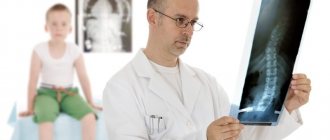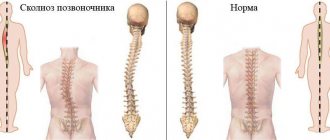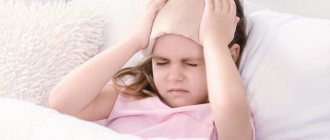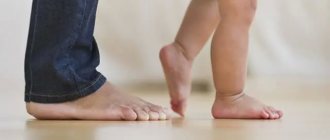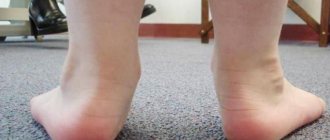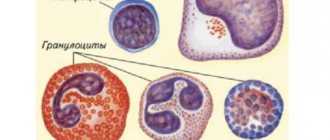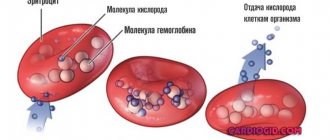Center for Neurosurgery Dr. Baklanov A.N. successfully treats childhood and adolescent scoliosis of any degree. We will answer all your questions by phone. You can also ask a question by filling out the request form below.
The spine begins to form from birth. And even then it can begin to bend. Because of which? Lateral curvature of the spine (also called scoliosis) appears for various reasons. And we’ll tell you exactly which ones now. The causes of the disease must be known for more effective treatment.
And under no circumstances should parents turn a blind eye to this disease, because the consequences are not pleasant. It is only initially that scoliosis is a curvature of the spine, that is, it is an external deformation. But little by little it develops, which causes not only discomfort, but also pain to the child, which makes motor functions difficult. And the task of parents is to prevent the disease from developing further.
What causes scoliosis in children?
Let's start from an early age, when the spine is not yet strong, which means it can easily bend due to:
- sleeping on a soft mattress;
- supporting the child with only one hand while he walks;
- carrying on the arms only from one side - in this case, the load on the muscles of his back is distributed unevenly.
Puberty is one period when scoliosis in children can begin to develop. The reason for this is a sedentary lifestyle, poor nutrition, and vitamin deficiency, which weakens the bone and joint system. It is also worth separately noting the incorrect position during, for example, long periods of sitting at a desk. The disease can also begin to develop due to certain sports. For example, when playing tennis, physical activity occurs on one side. Weightlifting, which teenagers love to do in hopes of becoming beautiful and strong, is an excessive physical activity. It also causes the development of the disease.
Scoliosis can be not only acquired, but also congenital. Why is it developing? Due to intrauterine developmental defects. Thus, a common cause of the disease is the appearance of extra vertebrae, their irregular shape and undeveloped muscle mass. All this may appear due to the expectant mother’s failure to comply with the doctor’s recommendations, her bad habits, or a previous infectious disease.
Symptoms of the disease
Scoliosis in children has the following symptoms:
- the back gets tired quickly;
- headaches occur frequently;
- irritability appears;
- mood changes quickly;
- the child becomes inattentive.
As a rule, parents rarely pay attention to all these symptoms. The result is a lack of prevention and timely treatment. Usually the disease is detected only during routine examinations in kindergartens and schools. Experts pay attention to:
- asymmetry of the shoulder blades and shoulders;
- lack of balance;
- deviation of the body from the norm.
Stages of scoliosis
The disease is classified into four degrees of severity. The first, as is clear, is the easiest. This diagnosis is made when the spinal column deviates from the norm by no more than ten degrees. What are the first degree symptoms? There are quite a lot of them, so we will list the main ones:
- head slightly lowered;
- shoulders pulled together;
- one shoulder is higher than the other;
- there is asymmetry of the waist
- there is an arc that is formed at the moment when a person leans forward (in a straightened state it is invisible).
The second degree is diagnosed only if a person has had an x-ray and his spine deviates from the norm by 11-25 degrees. The signs are:
- neck asymmetry is observed;
- the pelvis is unevenly located, in addition, on the side on which there is a curvature, it is lowered;
- there is a cushion on the lumbar region;
- chest sticks out.
And, most importantly, in the second degree of the disease, the arc is observed not only when tilted - it is visible even when the person is in an upright position.
The third degree is diagnosed when the spine deviates from the norm by 26-50 degrees. In this case, the disease is visible to the naked eye, since a person has a rib hump on the side of the curvature, and on the other side the ribs are sunken. The patient literally becomes distorted. Also, the ribs, located on the side on which the arch is skewed, are close to the largest of the three paired bones that form the pelvic bone.
The fourth stage is diagnosed when the deviation of the angle of inclination from the norm is at least 50 degrees. The human ribs, located in the place where the bend is observed, fall on each other. On the opposite side there are very tight muscles and a stretched space between the ribs.
As you can see, the most severe degrees are the third and fourth. If you don’t do anything to correct the situation, start treatment and follow the recommendations of specialists, you can remain immobilized. And at this time the disease will progress, and rapidly. As a result, the functioning of vital organs such as the heart, lungs, and pelvis will be impaired. As a result, the person will become disabled.
This is how a seemingly harmless disease can lead to such serious consequences. So treatment of scoliosis in children is a necessary measure that every parent whose child suffers from this disease should take. Under no circumstances should you turn a blind eye to this and regularly visit a doctor for examinations.
The shape of the curvature may vary. It doesn’t matter what the degree of scoliosis is: it can be arched in the shape of the letter C, it can have two arches (in the shape of S), and also with three or more arches, resembling the letter E.
Physical and neurological testing
The doctor takes a careful look at the patient's medical history, and the doctor may use the following physical tests to see and measure the curvature:
- Adam's Forward Bend Test.
- Plumb line check: This is a quick visual check to ensure that the axis of the spine is straight. With scoliosis, the plumb line will pass to the left or right of the spine, and not through the middle of the buttocks.
- Scoliometer: If the doctor sees a rib hump, they may use a scoliometer to measure the size of the hump. This is a painless and non-invasive test.
- Leg length: In order to determine the discrepancy, the legs are measured and compared.
- Palpation: The doctor will determine the presence of spinal abnormalities by palpation. The ribs or psoas muscles may be more prominent on one side of the spine than the other.
- Range of motion: The doctor will determine the degree to which the child can perform movements such as flexion, extension, side bending, and rotation of the torso. The doctor also notes the presence of asymmetry.
In addition to the physical assessment, the doctor performs a neurological examination. The goal is to identify the presence of areas of numbness, tingling, weakness and other neurological symptoms, which may include changes in bowel or bladder function.
Consequences of the disease
Scoliosis in children leads to deformation of not only the spine, but also the chest. If the disease is not treated, its form changes. As a result, ventilation of the lungs is impaired, immunity is reduced, which is why the child becomes easily susceptible to colds.
But the consequences of untreated scoliosis do not end there. Thus, the intercostal nerves are also affected, which is why not only the headaches that we mentioned above occur, but also various types of neuralgic diseases.
Medical Imaging Techniques
Your doctor may order imaging tests, such as X-rays, CT scans, and magnetic resonance imaging (MRI). Image analysis allows the doctor to see where scoliosis has developed in the spine and the extent of the curve. In addition, imaging techniques are very important as they are necessary to plan an individual treatment plan.
Although MRI and CT scans may be used in some patients with suspected scoliosis, radiography is the standard imaging modality for identifying and monitoring curve progression.
To see the entire length of the spine, the child must stand during the x-ray. Two types of radiography are commonly used to fully identify curvature:
- posterior/anterior and lateral (side) x-ray.
- When the body is tilted to the side, X-rays determine the flexibility of the spine.
The X-ray results allow the doctor to measure and classify the curve based on its extent in degrees.
- Curves exceeding 25 degrees to 30 degrees are significant.
- Curves exceeding 45 degrees to 50 degrees are severe.
X-rays are not only key to illustrating the full nature of scoliosis—they are also important in determining skeletal age and bone maturity. The progression of the curve may stop once the child reaches adulthood, so knowing how many years are left until growth is complete is important for treatment planning.
To determine the age of the skeleton, the doctor can compare an X-ray of the spine with a standard. This will determine the maturity of the bone tissue and the risk of progression.
X-rays are an integral part of diagnosis, but they are also used to monitor the progression of the curve and guide treatment decisions long after the initial diagnosis has been made. These additional x-rays cause radiation problems, especially the effects on breast tissue.
To reduce any adverse effects of spine scans, doctors limit the number of x-rays a patient receives each year and use lead shields to protect breast tissue.
Treatment of scoliosis
Treatment of scoliosis in adolescents and children can be carried out at home or in a hospital. The last option is more preferable, since in this case the child will receive qualified medical care. Many specialists are involved in this process, including:
- masseur;
- physiotherapist;
- chiropractor;
- physical therapy instructor;
- vertebrologist
Treatment is primarily aimed at relieving the load on a person’s spinal column. To prevent the disease from progressing further, the child performs gymnastic exercises, exercise therapy, swimming, and receives a back massage. By the way, it is he who relieves spasms from muscles that cannot withstand the load, and also increases their tone.
The child performs only those exercises that are individually designed for him, taking into account the characteristics of his body, age, severity of the disease and much more.
But the list of measures aimed at getting rid of scoliosis does not end there. So, to form correct posture in a child, he is prescribed manual and physical therapy. He must also wear a special corset.
All this is done by patients who have the first or second stage of the disease. Treatment of scoliosis in children of the third degree involves surgical intervention. Of course, such measures are not always taken - only for some curvatures. But in the fourth stage of the disease you cannot do without surgery. The same applies to cases where there are disturbances in the functioning of internal organs.
The operation is usually performed on children aged 10-14 years. It is necessary in order to implant special fixation devices into the human body. After this, a very long recovery process begins.
At home, treatment of scoliosis in adolescents is possible only if the disease is of the first or second degree. In this case, the child:
- does exercises;
- performs special exercises;
- makes sure your posture is correct.
General information
Scoliosis is a pathological curvature of the spine in which rotation occurs around the longitudinal axis.
Changes also affect internal organs. They are compressed and change their position, which subsequently leads to disruption of their functionality. Scoliosis is diagnosed in 5-10% of children. Girls get sick 9 times more often than boys. The risk category includes children aged 5 to 12 years. During this period, the spine grows rapidly. If a child sits incorrectly at a desk or does not play sports, scoliosis develops especially quickly. Depending on the age of the baby, there are 3 types of scoliotic deformity:
- infantile, or infantile - occurs up to 3 years;
- children's or juvenile - from 3 to 10 years;
- youth - from 10 to 18 years.
Parents usually bring children with scoliosis to the doctor at the age of 8-14 years. During this period, the symptoms of the disease become especially noticeable. Sometimes pathology is diagnosed only during a routine medical examination.
